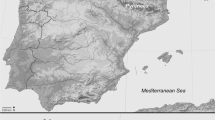Abstract
In year 2009 a faithful replica of the studiolo (inlaid wainscot of the private study) of Fed-erico da Montefeltro was relocated inside the ducal palace in Gubbio. This masterpiece had left the palace in 1874 and since 1939 it is owned by the Metropolitan Museum of New York. The replica required a laborious study of the photographs and a careful choice of the wood essences. It was also reconstructed a panel (derived by an old photograph), which had been lost during the shipping from Italy to United States. This panel shows an object that had hitherto remained mysterious. We recognized in this object a plumb bob board: an instrument very popular in the Renaissance often represented in paintings and inlays. These elements confirm the authenticity of the missing panel and justify its reproduction along with the other ones. This plumb bob board is represented without the plumb bob; it is a clear allusion to the Duchy of Urbino deprived of the head because of the sudden death of the Duke Federico. This new interpretation allows to re-consider in a unitary manner the objects, variously and in appearance chaotically, represented in the studiolo and in particular those lying on the fake inlaid stalls that work somehow as desks for the heir Guidubaldo who was 10 year at the father’s death. His tutor as well as new regent of the Duchy, Ottaviano Ubaldini della Carda, has to reassure the novel Duke of the continue assistance-presence of the dead father, showing him the pathway for a good government and teachings him the philosophy of Plato. Furthermore the replica of the studiolo and its reinstallation in the native site permits us to evaluate the fundamental role of the external light in the understanding of the whole cycle. According to these bases this wonderful work of art can be further explained and appreciated, showing the complexity of the intellectual Renaissance world, which is expressed by a so elevated and elitist symbolism.
The original version of the book was revised: Misspelt author name has been corrected. The erratum to the book is available at https://doi.org/10.1007/978-3-319-67026-3_27
Access this chapter
Tax calculation will be finalised at checkout
Purchases are for personal use only
Similar content being viewed by others
References
Ambrogi, V.: Gvbbio Studiolo Replica, EFG -Fotolibri Gubbio (2016). ISBN:978884157758
Belardi, P., Martini, L., Ramaccini, G.: Environmental illusions. The use of perspective in the Studiolo di Guidobaldo da Montefeltro in Gubbio. Critical review of studies on the rapresentation of Architecture and use of the image in science and art (2016). http://dx.doi.org/10.15168/xy.v1i2.28
Capannelli, S.: Il Palazzo Ducale di Gubbio e Francesco di Giorgio Martini, Gubbio (2008)
D’Ascia, L.: Il Corano e la Tiara. Ed. Pendragon, Bologna (2001)
Ficino, M.: Plotini Platoricorum facile coryphaei Libri 54 in 6 Enneades distributi, Basilea (1580)
Hasluck, P.N.: Cassell’s Carpentry and Joinery. David McKay, Philadelphia (1907)
Kemp, M., Making it work: the perspective design of the Gubbio Studiolo, 12 pp. 169–177 (1999)
Longhi, R.: Da Cimabue a Morandi, Mondadori Ed., Milano (1973)
Michelini Tocci, L.: Ottaviano Ubaldini della Carda e una inedita testimonianza sulla battaglia di Varna (1444), Mélanges Eugène Tisserant, vol. 7, Città del Vaticano BAV, pp. 97–130 (1964)
Molari, P.G.: Due libri su Piero della Francesca, AMSacta (2012). http://amsacta.cib.unibo.it/3513
Palazzini, G.: Cenni della politica ecclesiastica in Ottaviano Ubaldini della Carda nei frammenti inediti di parte del suo epistolario. Atti e Memorie. Deputazione di Storia Patria delle Marche, Serie VIII, pp. 13–40
Raggio, O.: The Gubbio Studiolo and its Conservation, vol I: Federico da Montefeltro’s Palace at Gubbio and Its Studiolo, The Metropolitan Museum, New York (1999)
Vasari, G.: Le vite de’ più eccellenti pittori scultori e architettori, Giunta Bernardo, Firenze (1568)
Wilmering, A.M.: The Gubbio Studiolo and its Conservation, vol II: Italian Renaissance Intarsia and Conservation of the Gubbio Studiolo, The Metropolitan Museum, New York (1999)
Author information
Authors and Affiliations
Corresponding author
Editor information
Editors and Affiliations
Rights and permissions
Copyright information
© 2017 Springer International Publishing AG
About this paper
Cite this paper
Ambrogi, V., Molari, P.G. (2017). The Plumb Board in the Missing Panel: A New Key for Understanding the Renaissance Symbolism in the Gubbio Studiolo . In: Ceccarelli, M., Cigola, M., Recinto, G. (eds) New Activities For Cultural Heritage. Springer, Cham. https://doi.org/10.1007/978-3-319-67026-3_2
Download citation
DOI: https://doi.org/10.1007/978-3-319-67026-3_2
Published:
Publisher Name: Springer, Cham
Print ISBN: 978-3-319-67025-6
Online ISBN: 978-3-319-67026-3
eBook Packages: Literature, Cultural and Media StudiesLiterature, Cultural and Media Studies (R0)




